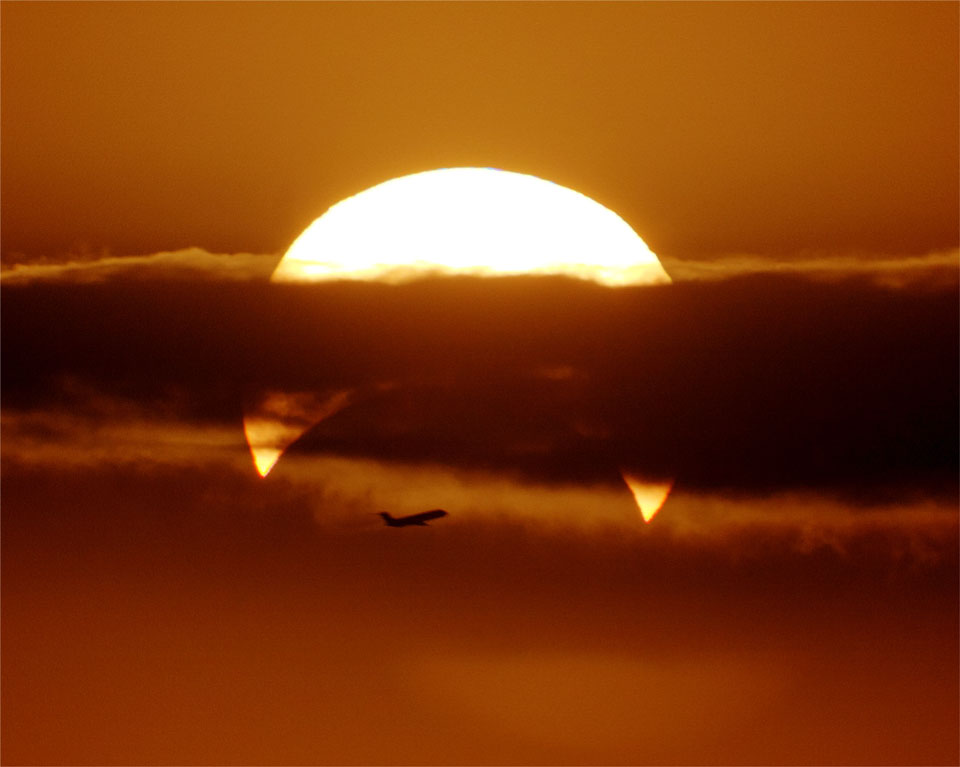Rare Hybrid Solar Eclipse May Be Visible from Eastern US Sunday

Editor's Note: For the latest info and skywatching guides for the Nov. 3 solar eclipse, read: Secrets of Sunday's Rare Solar Eclipse Explained
The moon will blot out the sun Sunday (Nov. 3) in an eclipse that will be visible from eastern North America to the Middle East.
Sunday's celestial event is a relatively rare occurrence known as a hybrid solar eclipse. It will begin as an annular or "ring of fire" eclipse along the path of totality, then shift to a total eclipse as the moon's shadow sweeps across our planet.
What you'll observe depends on where you live. Skywatchers in the eastern United States, northeastern South America, southern Europe, the Middle East and most of Africa will be treated to a partial solar eclipse, while people along the path of totality in central Africa will see the sun totally obscured by Earth's nearest neighbor for a few dramatic moments.
If you live in eastern North America, you'll have to get up early to enjoy the show. The partial eclipse will be visible at sunrise — about 6:30 a.m. local time — and last for about 45 minutes, experts say. Viewers in Boston and New York will see the sun more than 50 percent covered by the moon, while our star will appear 47 percent obscured from Miami and Washington, D.C. [Photos: Nov. 3 Hybrid Solar Eclipse Visibility Maps & Images]
All of the action in this part of the world will be occurring low in the sky, less than 8 degrees from the east-southeast horizon. (Your fist held at arm's length measures about 10 degrees.) So you'll want to find a spot that affords a good look at the horizon, without any buildings or hills blocking the view.
The path of totality, meanwhile, starts in the Atlantic Ocean off the eastern U.S. and runs through Gabon, the Democratic Republic of Congo, and several other African nations before petering out in southern Ethiopia and Somalia around sunset.
Breaking space news, the latest updates on rocket launches, skywatching events and more!
Warning: If you are planning to watch Sunday's solar eclipse in person, be extremely careful. Never look directly at the sun, either with the naked eye or through telescopes or binoculars without proper filters. To safely view solar eclipses, you can buy special solar filters or No. 14 welder's glass to wear over your eyes. Standard sunglasses will NOT provide sufficient protection.
You can also build a simple pinhole camera, or look at the shadows filtering onto the ground through the leaves on a tree. (The spaces between leaves often create many natural pinholes).
Editor's note: If you snap an amazing photo of Sunday's solar eclipse or any other celestial sight that you'd like to share for a possible story or image gallery, please contact managing editor Tariq Malik at spacephotos@space.com.
Follow Mike Wall on Twitter @michaeldwall and Google+. Follow us @Spacedotcom, Facebook or Google+. Originally published on SPACE.com.

Michael Wall is a Senior Space Writer with Space.com and joined the team in 2010. He primarily covers exoplanets, spaceflight and military space, but has been known to dabble in the space art beat. His book about the search for alien life, "Out There," was published on Nov. 13, 2018. Before becoming a science writer, Michael worked as a herpetologist and wildlife biologist. He has a Ph.D. in evolutionary biology from the University of Sydney, Australia, a bachelor's degree from the University of Arizona, and a graduate certificate in science writing from the University of California, Santa Cruz. To find out what his latest project is, you can follow Michael on Twitter.

